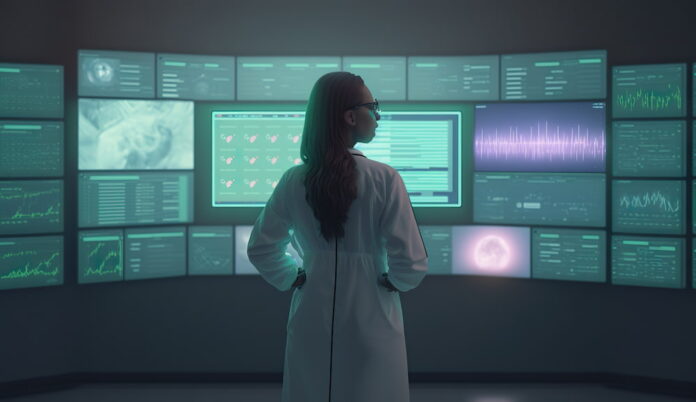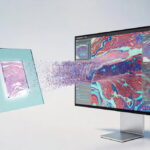The healthcare industry is a hotbed for cyberattacks, and the cost of these attacks can be staggering. Even extensive healthcare systems can become victims of cyber-attacks.
In October 2022, CommonSpirit Health, one of the largest healthcare systems in the United States, was hit by a ransomware attack. As such, the organization incurred over USD$150 million in financial losses, including legal fees, credit monitoring, and other expenses.
It only shows that the healthcare industry should take cybersecurity. In this article, you can find ways to identify weaknesses and implement effective security measures to prevent and protect your systems and data from cyberattacks.
Cybersecurity Scan: Find The Holes In Your Security Before The Hackers Do
Cybercriminals are always looking for vulnerabilities in healthcare systems to exploit. Thus, it’s essential to identify and address these vulnerabilities before they can be exploited.
One way to do this is to conduct regular security assessments on the following:
– Network Infrastructure: This includes the physical and logical security of the network and the devices connected to it.
– Software Applications: It includes the security of the software used in the healthcare organization and the data stored in these applications.
– Employee Practices: This includes security awareness and following the security procedures.
Protecting healthcare data against cyber attacks is possible by addressing security gaps and preventing potential breaches by pinpointing areas of concern.
How To Solve Cybersecurity Vulnerabilities In Healthcare
Identifying security gaps in your system is only the beginning; the next crucial step is addressing these vulnerabilities.
Cybersecurity in healthcare demands a multi-faceted approach involving collaboration, education, and continuous improvement. To effectively solve cybersecurity vulnerabilities in your network, consider these tips:
1- Strengthening Network Security
The first line of defense against cyber-attacks is a robust network security system. Here’s how to strengthen it:
– Employ advanced firewalls, intrusion detection systems, and encryption protocols
– Regularly update security software
– Promptly patch vulnerabilities
With this, you can ensure that healthcare networks remain secure and less susceptible to evolving cyber threats.
2- Implementing Access Controls
Controlling access to sensitive healthcare information is also crucial in preventing data breaches. By adopting a Role-Based Access Control (RBAC) system, you can limit data access to only authorized personnel, reducing the risk of internal data breaches.
For instance, administrators have the highest access, while physicians and nurses only have access tailored to their specific responsibilities. The number of administrators is limited to prevent unauthorized changes to the RBAC setup.
Meanwhile, physicians can view medical history, test results, and prescribed medications, but they’re restricted from accessing patient records outside their care.
Striking a balance between data security and seamless healthcare operations is vital to ensure healthcare data protection and excellent service.
3- Educating Employees
A well-informed workforce is a powerful defense against cyber threats. Thus, it’s vital to provide regular cybersecurity training to them to raise awareness of potential risks and best practices. These include:
– Identifying phishing attempts
– Using strong passwords
– Recognizing suspicious activities
By cultivating a cybersecurity-conscious culture, you can empower your staff to become active participants in protecting sensitive data.
4- Conducting Regular Data Backups
In the face of cyber-attacks, data backups serve as a lifeline. Regularly backing up patient data and storing it securely off-site ensures that critical information remains intact.
So even during a ransomware attack or system breach, your medical facilities can continue providing quality care.
Thanks to reliable data backups, you can reduce the impact of data loss and business operation disruptions.
5- Ensuring Secure Remote Access
The rise of telemedicine and remote work in healthcare has made secure remote access solutions more important. Healthcare providers and employees often need to access patient information from various locations, which can create security risks if not done properly.
One way to mitigate these risks is to implement Virtual Private Networks (VPNs).
VPNs create a secure tunnel between a remote user’s device and the healthcare organization’s network by encrypting all data transmitted between the two points. It helps to protect patient information from being intercepted by unauthorized individuals.
6- Securing the Internet of Things (IoT) Devices
The IoT devices, such as medical wearables and smart medical equipment, collect and transmit sensitive patient data, making them a prime target for cybercriminals.
These devices have firmware—software that controls the device’s hardware and operating system—which can have vulnerabilities. Cybercriminals can exploit such vulnerabilities and steal sensitive healthcare data. To prevent this cyber-attack, take these measures:
– Regular firmware updates
– Strong passwords utilization
– Two-factor authentication implementation
– Network segmentation
With these, you can keep your medical wearables or devices secure, allowing you to provide high-quality care.
Counter Cybersecurity Attacks
Providing quality care is essential, but preserving the industry’s safety is equally crucial.
Cyber-attacks threaten to disrupt your commitment to patients and healthcare providers, but a proactive approach is the key to preventing this. Uncover vulnerabilities, address them directly, and implement robust solutions to strengthen your defenses against cyber adversaries.
Act now, prioritize cybersecurity, and forge a resilient healthcare future where nothing can dim the brilliance of your care.
About Author
James Collins
James Collins is an experienced cybersecurity expert with a passion for safeguarding sensitive data in the healthcare industry. With a bachelor’s degree in computer science and multiple industry certifications in cybersecurity, James has dedicated his career to understanding the evolving landscape of cyber threats and implementing effective solutions to protect organizations from potential attacks. When he’s not immersed in the world of cybersecurity, James enjoys staying up-to-date with the latest technological advancements and spending quality time with his family.
Read Also
- Automated Healthcare Software Solutions: How Intelligent Platforms Are Redefining Clinical, Administrative, and Operational ExcellenceThe healthcare industry is undergoing a seismic transformation. Rising patient volumes, value-based care models, staffing shortages, and complex regulatory demands have prompted organizations to look beyond traditional tools and embrace advanced software automation. As providers search for innovative partners capable of tailoring these sophisticated systems to real-world workflows, many turn to MCSI (Managed Care Systems,… Read more: Automated Healthcare Software Solutions: How Intelligent Platforms Are Redefining Clinical, Administrative, and Operational Excellence
- Why Whole Slide Imaging Shapes the Future of Digital PathologyWhole slide imaging has become one of the most important developments in modern pathology. It changes how tissue is examined, how cases are shared and how pathologists collaborate with the wider care team. More than a technological upgrade, it represents a shift in how laboratories think about their workflow, their storage needs and the tools… Read more: Why Whole Slide Imaging Shapes the Future of Digital Pathology
- Comparing 2025 Dental Practice Management Software OptionsSoftware Key Strengths Potential Limitations Best For Dentimax • Offers both cloud-based and on-premise/server deployment. • Tight integration between imaging (e.g. X-ray sensors) and practice management, charts, treatment planning, imaging all in one. • Transparent pricing and relatively simple UI/usability; solid for small to medium general practices. • May lack some of the… Read more: Comparing 2025 Dental Practice Management Software Options
- Top Innovations in Dermatology and Skincare TechnologiesHave you ever wondered how skincare keeps getting better year after year? From fighting acne to reducing wrinkles, today’s treatments seem more advanced than ever before. The tools and techniques used by dermatologists today are smarter, safer, and more effective than those we had just a few years ago. These breakthroughs don’t just help with… Read more: Top Innovations in Dermatology and Skincare Technologies
- Telehealth and Beyond: Building a Connected Continuum of CareHealthcare is on the verge of a radical transformation. Technology no longer simply supports medicine; it actively shapes how care is delivered and experienced. Achieving a seamless continuum demands more than deploying tools—it requires intentional design, coordinated teamwork, and innovative platforms that adapt to diverse clinical and patient needs. This article explores key strategies for… Read more: Telehealth and Beyond: Building a Connected Continuum of Care
- Optimizing CT Protocols: The Hidden Key to Efficiency and Cost Savings in RadiologyIntroduction: Why CT Protocol Optimization Matters Computed Tomography (CT) is a cornerstone of modern diagnostic imaging, providing critical information across nearly every medical specialty. However, maximizing the value of CT — both clinically and financially — requires more than just advanced hardware. The real secret lies in the optimization of CT protocols. When CT protocols… Read more: Optimizing CT Protocols: The Hidden Key to Efficiency and Cost Savings in Radiology







